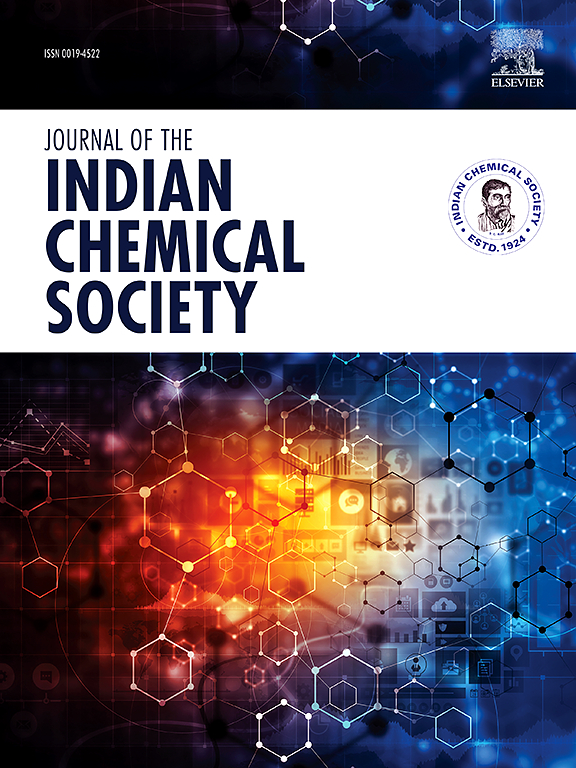银纳米粒子与苯并噻唑衍生物合成的新型有机-无机纳米杂化物的合成、表征、DFT和分子对接
IF 3.2
4区 化学
Q2 CHEMISTRY, MULTIDISCIPLINARY
引用次数: 0
摘要
本研究包括新的苯并噻唑衍生物的制备。以2-巯基苯并噻唑为原料,与氯乙酸反应制得羧酸衍生物(N1)。以水合肼与2-巯基苯并噻唑为原料,制备了2-肼基苯并噻唑(N2)。以2-肼基苯并噻唑为原料,与苯甲酰氯反应制备了一种新的酰胺衍生物N3。同时,以小榄花水提物为还原剂制备了纳米银(N4)。然后,通过苯并噻唑衍生物(N1, N3)与纳米银的反应制备了新的有机纳米复合材料。采用紫外可见光谱(UV-Vis)、红外光谱(FTIR)、氢核磁共振(NMR)、x射线衍射(XRD)、扫描电镜(SEM)和透射电镜(TEM)等技术对所制备的化合物进行了表征。密度泛函理论(DFT)研究了我们之前合成的三个苯并噻唑衍生物(化合物N1, N2和N3)。分子对接研究发现,N1、N2和N3与VEGFR-2酶表现出良好的相互作用。此外,N3也以结合方式与COX-2酶相互作用。只有化合物N3对乳腺癌受体有很好的抑制作用。这些发现表明,N1、N2和N3可以作为先导化合物来发现新的抗癌和抗炎药物设计。本文章由计算机程序翻译,如有差异,请以英文原文为准。
Synthesis, characterization, DFT and molecular docking of novel organic-inorganic nanohybrids synthesized from silver nanoparticles with benzothiazole derivatives
This research includes the preparation of new benzothiazole derivatives. The carboxylic acid derivative (N1) was prepared by reacting the compound 2-mercaptobenzothiazole with chloroacetic acid. The compound 2-hydrazinobenzothiazole (N2) was also prepared from the reaction of aqueous hydrazine with the compound 2-mercaptobenzothiazole. A new amide derivative (N3) was prepared by reacting the compound 2-hydrazinobenzothiazole with benzoyl chloride. Silver nanoparticles (N4) were also prepared using aqueous extract of Malva parviflora as a reducing agent. Then that, new organic nanocomposites were prepared through the reaction of benzothiazole derivatives (N1, N3) with silver nanoparticles. The prepared compounds were characterized using different techniques: UV–Vis, FTIR, H NMR, XRD, SEM and TEM. Density function theory (DFT) studies were performed on three benzothiazole derivatives (compounds N1, N2, and N3), previously synthesized by our group. Molecular docking studies revealed that N1, N2, and N3 showed a good interaction with VEGFR-2 enzyme. Moreover, N3 has interacted with COX-2 enzyme in the binding mode, as well. Only compound N3 displayed very good activity against breast cancer receptor. These findings showed us that N1, N2, and N3 could be led compounds to discover new anti-cancer and anti-inflammatory drug design.
求助全文
通过发布文献求助,成功后即可免费获取论文全文。
去求助
来源期刊
CiteScore
3.50
自引率
7.70%
发文量
492
审稿时长
3-8 weeks
期刊介绍:
The Journal of the Indian Chemical Society publishes original, fundamental, theorical, experimental research work of highest quality in all areas of chemistry, biochemistry, medicinal chemistry, electrochemistry, agrochemistry, chemical engineering and technology, food chemistry, environmental chemistry, etc.

 求助内容:
求助内容: 应助结果提醒方式:
应助结果提醒方式:


